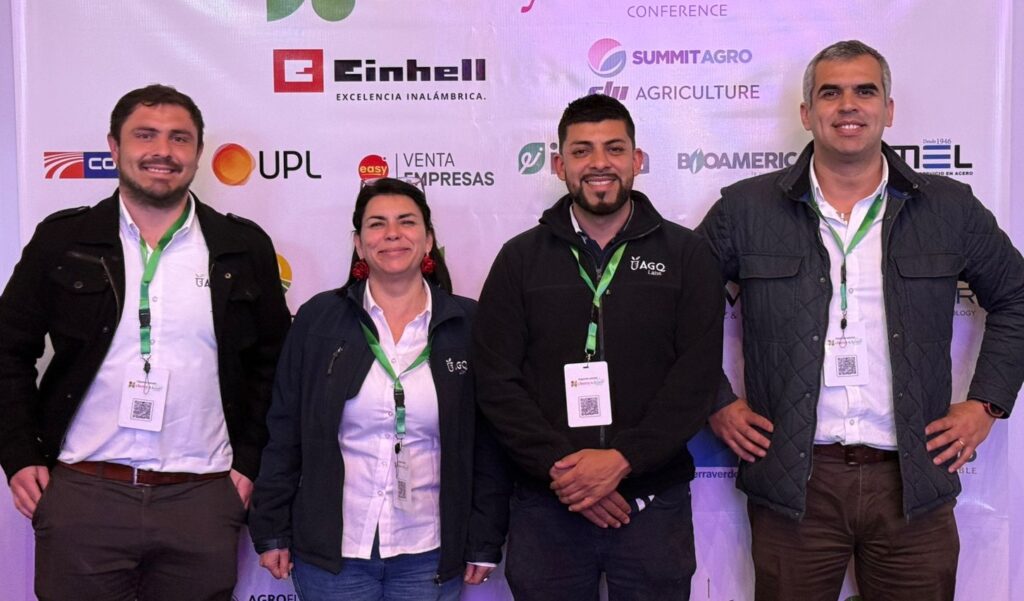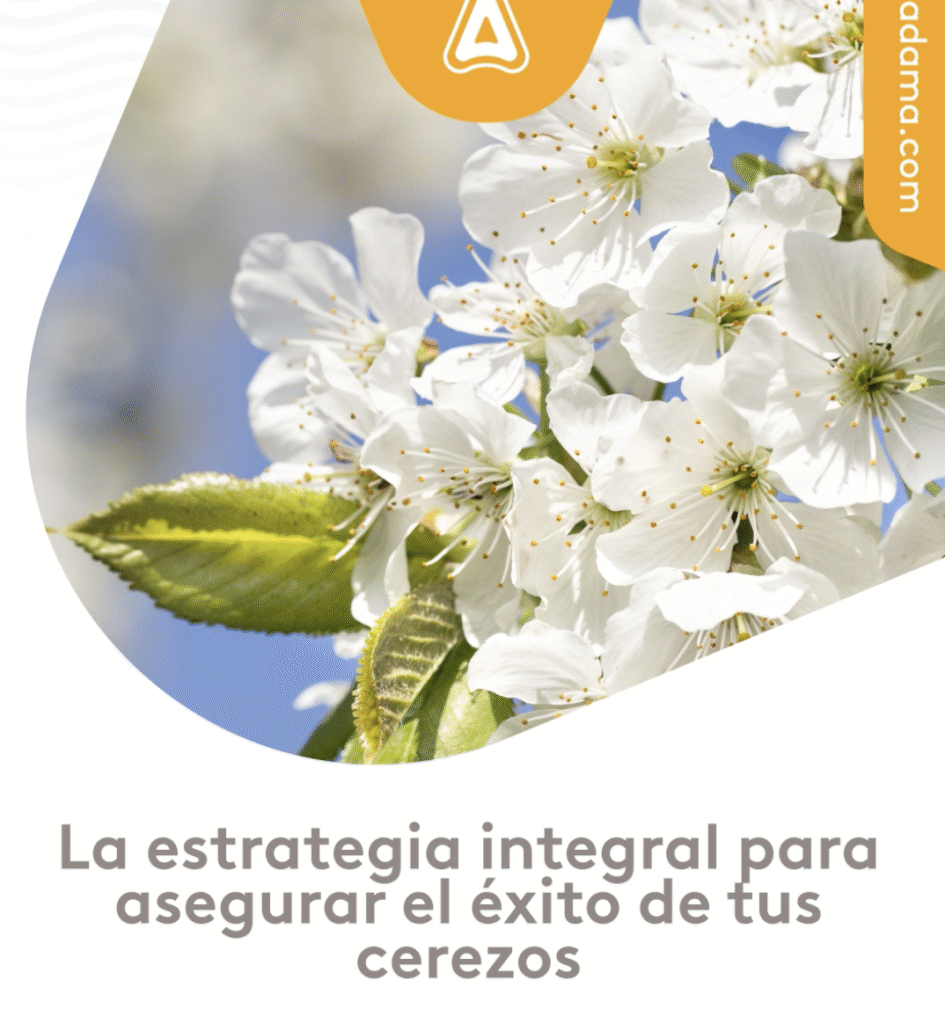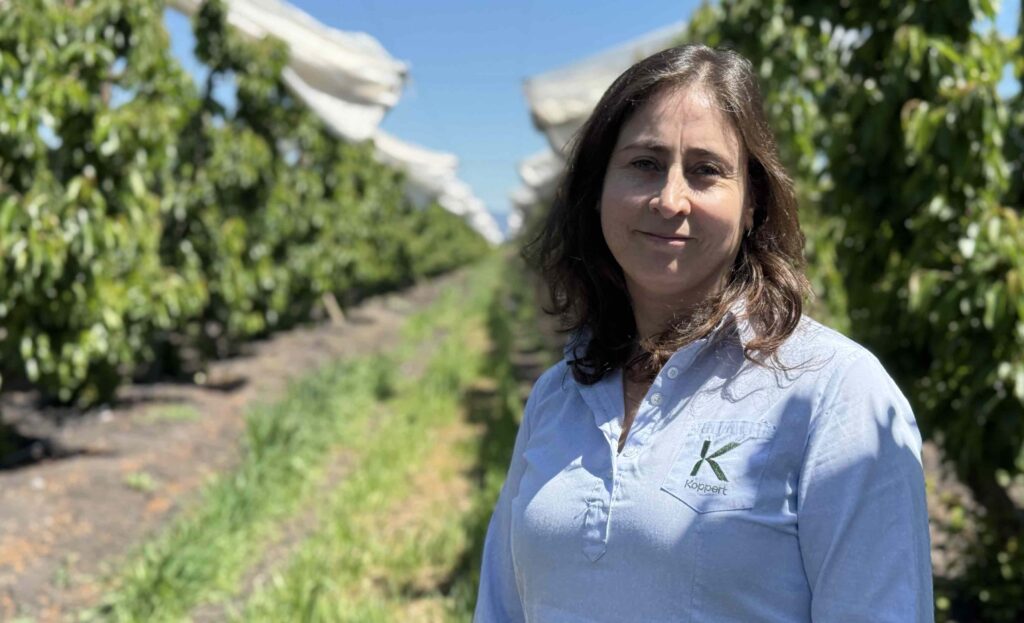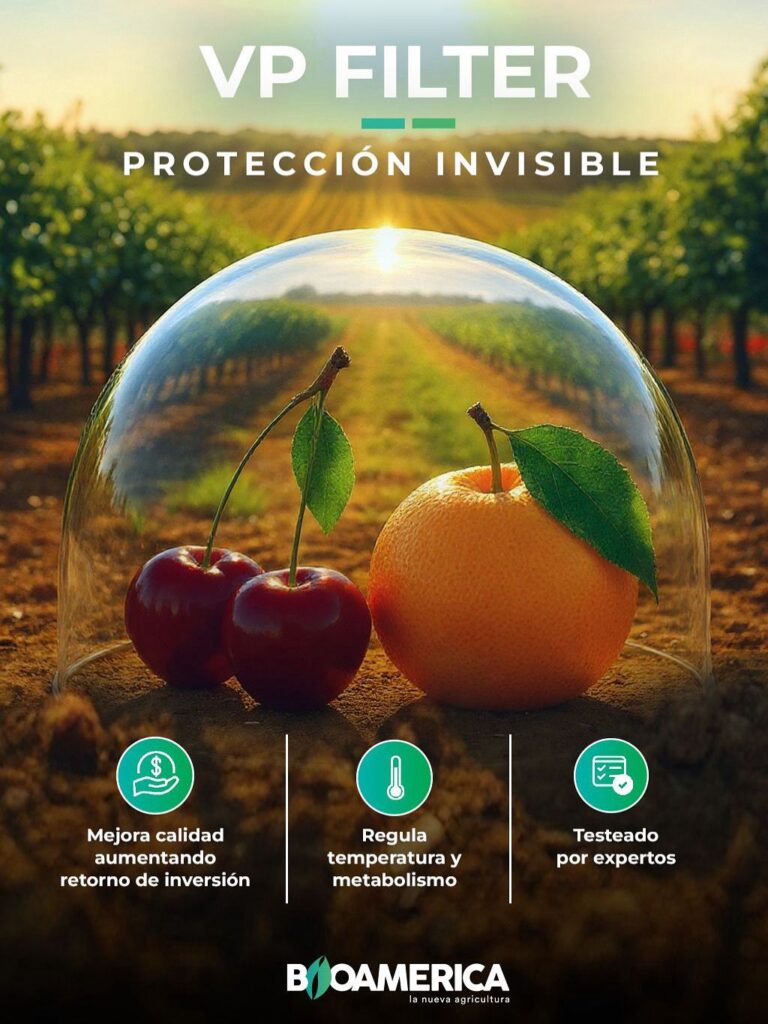By: Walter Masman, Agricultural Engineer, PUCV, Technical Advisor and Consultant, specialist in cherry trees; Priscila González, Agricultural Engineer, PUCV, Research Assistant; Carlos José Tapia T., Agricultural Engineer, M., Specialist in cherry production.
In a season like this, where we are faced every week with different situations that further complicate the production of cherry trees, we can point out in a transversal way that the deficiency of cold accumulation in the dormant stage of the plants is one of the factors that sets the tone if we talk about limiting the production potential of the orchards, this added to the low temperatures in the dormant stage and rains associated with the flowering and fruiting period.
In Chile, in the last 20 years of cherry production, low production is noted, mainly due to the lack of cold in the seasons.
If you compare the accumulation of cold (measured in cold hours based on 7.2ºC), the hours this season versus the averages over the last 10 seasons, is below by approximately 30%.
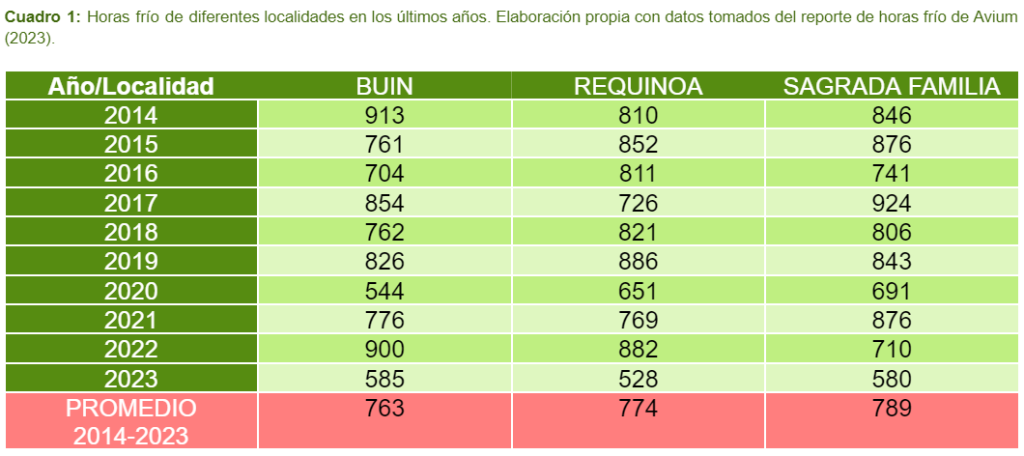
This deficiency began to be observed with very uneven and irregular flowering, fruit centers that did not open, poor setting and very late budding, to which we add the rains during flowering and in some cases, flooded soils, finally allowing the outcome to be even more complicated.
Regarding the unevenness, it was more evident in those varieties that require greater cold accumulation and earlier flowering, such as Royal Dawn, Santina and Bing; although Lapins is one of the varieties with lower cold requirements, this unevenness could also be seen, but to a lesser extent. With all of the above, it is very likely that the decrease in volume for this year in relation to the estimates will be around 25-30% less than last season.
Management to minimize the effects of cold deficiency
The most commonly used management methods to deal with cold deficiency are related to: 1) improving the state or quality of the plants' dormancy, 2) intervening to a lesser extent on the plant (pruning) in order to increase the number of fruiting centers. Another recently used management method is related to evaporative cooling, the result of which is associated with a decrease in the temperature of the buds.
Regarding the first point, an important management is to induce the plants to go into recess, through a regulated stimulation that favors the entry into recess. We know that this stage is also associated with low luminosity and changes in temperature that begin to occur in the environment, therefore, it is not good to make late contributions of fertilization, particularly nitrogen, or excessive irrigation that promotes greater activity.
Subsequently, apply dormancy breakers such as hydrogenated cyanamide at higher doses than those normally applied, in order to promote more uniform flowering and budding states. However, the productive results will still be associated with different climatic indicators during the flowering period.
Utility and efficiency of shade use in recent years
Another way in which the quality of cold is evident in relation to the productive potential of trees is often associated with natural factors that imply shading due to: hills, hedges, structures, etc. Through simple observations, it has been possible to measure and quantify the productive increase associated with this quality of shade.
It should be considered that the dormancy stage is not only defined by the amount of cold accumulated in the cycle, but also regulated by the length of the photoperiod, which being shorter, assumes a better quality of dormancy.
On the other hand, the models for measuring and recording cold accumulation, in their different versions, consider ambient temperature scales for these calculations, but none of them consider the temperature of the bodies (trees or fruiting structures), which can benefit from the use of shade.
In relation to this point, we can confirm scientific evidence that has demonstrated the use of shadows to improve the quality of the cold and thus increase productivity. This behavior is associated with: uniformity and advance of flowering, and greater fruit set per fruit center. The above is also associated with other complementary technical management.
This behaviour is undoubtedly reflected in those years of poor cold accumulation, since in years of good cold the differences are not so significant.
Use of shade nets
Cherry cultivation in Chile takes place mainly in the central region, since it requires adequate environmental conditions during winter and spring to guarantee the quality and synchronization of flowering and its subsequent processes, supported by optimal climatic indicators.
The use of covers of all kinds in agriculture has become an important tool to mitigate adverse environmental conditions. Some examples are rain covers, shade nets and anti-hail nets.
In particular, the use of shade nets has become increasingly common in the production of fruit trees such as apple, blueberries and now also in cherry trees. These covers have different uses depending on the type of crop. In the case of the former, they are used to obtain a greater colour in the fruits, delaying their ripening, obtaining later harvests (Rodríguez and Morales 2015). This is due to the modification of the microclimate under these covers that directly affects the physiology of the plants and the development of the fruits (Valdevenito 2020). In addition, they are used to prevent sun damage to the fruits. In the case of cherry trees, they are used to allow the trees to enter a proper dormancy period, by forced modification of the photoperiod, and in winter, by shortening the photoperiod, generating a higher quality dormancy stage. These covers are definitely an effective solution to protect crops and guarantee their optimal development in unfavourable climatic conditions depending on the various objectives for each case.
The use of shade netting in cherry orchards oriented towards early harvests seeks to reduce solar radiation to create a short-day environment, and to enter and improve quality in the dormant stage. This technique studied, among others, by Ruiz et al (2005), where they shaded whole and parts of apricot trees (Figure 1), demonstrated a significant decrease in the intensity of solar radiation on shaded branches, which in turn reduces the temperature in the tree structures. They also observed a higher incidence of solar radiation on unshaded trees and that the temperature was higher, while the shade net reduced the interception and solar radiation, decreasing the temperature by 6°C. These findings highlight the potential of shade netting to influence bud break and production in cherry trees, especially under conditions of high solar radiation.
On the other hand, results from Beppu and Kataoka (2000), where they experimented with different nets, providing lower and higher percentages of shade, showed that shading reduced the maximum daily air temperature and that reducing light decreased the frequency of double pistils and concluded with the possibility of applying artificial shading to reduce the appearance of double fruits or ovary malformations in cherry trees grown in regions with hot summers.

This is a technology system that helps an industry maintain a sustainable business over time, which can benefit large and small producers and agroclimatic zones with very interesting potential that can be maintained in years of lower dormancy quality, and on the other hand, associated with other management, early harvest.
In addition to this, we must add the effects of a year with the influence of the El Niño phenomenon, which implies having warm winters and cold springs, where it is uncertain to determine the periods under this phenomenon. In conclusion, the combination of management strategies and The use of technologies such as shade nets are presented as essential tools to address cold deficiency, improve dormancy stage and optimize cherry production in challenging weather conditions, thus contributing to maintaining a sustainable business in the industry.
Read more about agronomic management here




